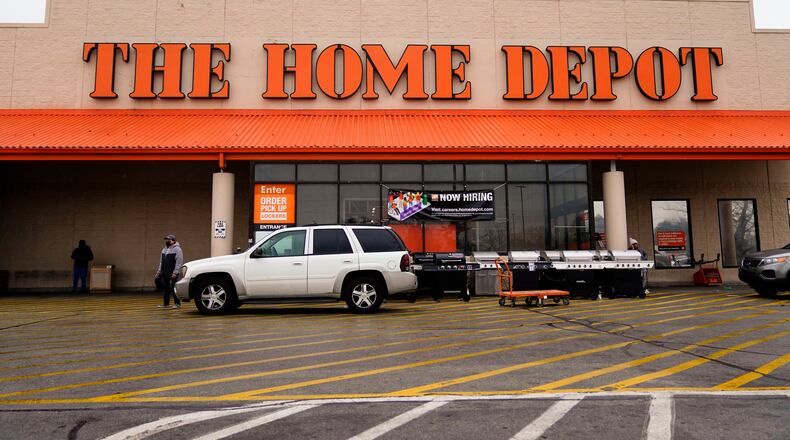Home Depot's third-quarter was mixed with fewer violent storms reaching shore, more anxiety among U.S. consumers and a housing market that is in a deep funk.
The company lowered its fiscal 2025 adjusted earnings forecast but raised its expectations for sales growth.
For the three months ended Nov. 2, Home Depot earned $3.6 billion, or $3.62 per share. A year earlier it earned $3.65 billion, or $3.67 per share.
Removing one-time charges and benefits, earnings were $3.74 per share, a dime short of Wall Street expectations, according to a poll by FactSet.
It is the third consecutive quarter that Home Depot, an overperformer in recent years, has missed profit expectations.
Home Depot's stock declined 3% in early morning trading on Tuesday. Shares of rival Lowe's, which will report quarterly results Wednesday, fell slightly.
“Our results missed our expectations primarily due to the lack of storms in the third quarter, which resulted in greater than expected pressure in certain categories,” CEO Ted Decker said in a statement. “Additionally, while underlying demand in the business remained relatively stable sequentially, an expected increase in demand in the third quarter did not materialize. We believe that consumer uncertainty and continued pressure in housing are disproportionately impacting home improvement demand.”
Revenue for the Atlanta company rose to $41.35 billion from $40.22 billion, topping Wall Street projections of $41.15 billion.
Sales at stores open at least a year, a key gauge of a retailer’s health, increased 0.2%. In the U.S., comparable store sales edged up 0.1%.
Customer transactions fell 1.4% in the quarter. The amount shoppers spent rose to $90.39 per average receipt from $88.65 in the year-ago period.
Neil Saunders, managing director of GlobalData, said that Home Depot's quarter was negatively impacted by external factors, not missteps made by the company. Americans who have grown more anxious over the economy were definitely a contributor, he said.
“The summer months were particularly challenging in this regard as consumers were actively making choices over how to spend their money, and home improvement took something of a back seat to experiences, travel, and personal indulgences,” he said.
David Silverman, senior director at Fitch Ratings, thinks Home Depot is in position to ride out today's adverse conditions.
“Home Depot has the appropriate scale, operating strategy and business mix to successfully navigate the current environment and fortify its position in the market,” he said in a statement.
Silverman thinks Home Depot can use supply chain shifts and vendor negotiations to mitigate the impact of tariffs and that it will benefit from diversifying its business mix toward professional customers and the maintenance and repair sectors and reducing its exposure to discretionary consumer projects.
Home Depot now anticipates fiscal 2025 adjusted earnings will decline approximately 5% from fiscal 2024’s $15.24 per share. It previously expected adjusted earnings would fall about 2% from its results in the prior fiscal year.
The chain now foresees fiscal 2025 sales growth of about 3%. Its prior forecast was for sales growth of approximately 2.8%. The company predicts comparable sales growth will be slightly positive. Previously, it predicted comparable sales growth of about 1%.
In August Home Depot said that shoppers should expect modest price increases in some categories as a result of rising tariff costs, though they wouldn’t be broad-based. Company executives told analysts during its earnings call then that more than 50% of its products are sourced domestically and wouldn’t be subject to any tariffs.
Home Depot’s results come as the U.S. housing slump drags on, with the country’s home turnover rate at the lowest level in decades. About 28 out of every 1,000 homes changed hands between January and September, the lowest U.S. home turnover rate going back to at least the 1990s, according to an analysis by Redfin.
The home turnover rate represents the number of homes sold, divided by the total number of existing sellable properties. While sales data show whether more or fewer homes are selling in a given period, the home turnover rate helps illustrate how homeowners are staying put longer.
The U.S. housing market has been in a slump dating back to 2022, the year mortgage rates began climbing from historic lows that fueled a homebuying frenzy at the start of this decade.
Keep Reading
The Latest
Featured

